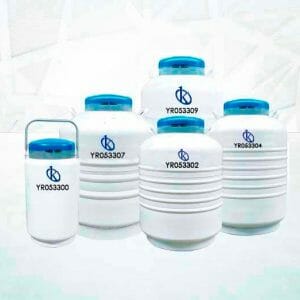Cryosurgery, sometimes called cryotherapy or cryoablation, is a method of destroying abnormal or diseased tissues at extremely low temperatures. Cryosurgery has yielded many excellent results as adjunctive therapy for benign or malignant tumors that are difficult to remove with conventional surgery. It has attractive clinical advantages over conventional surgical resection:
- Less invasive.
- Causes less pain.
- Bleeding and other surgical complications are avoided.
- Less expensive.
- Recovery period and a much shorter hospital stay.
Cryosurgery is not yet a routine cancer treatment, but it is developing fairly rapidly as an alternative to conventional radiation therapy and chemotherapy. With the advent of many modern imaging techniques, the field of cryosurgery has expanded considerably since its inception.
How does cold destroy cells?
Damage to cells caused by cold temperatures begins gradually as the temperature decreases. The metabolism and structure of the cell change, along with the proteins and lipids that make up the cell. In fact, if this condition persists for a long time, cell death can occur even without exposing it to low temperatures. The destructive effects of cryosurgery can be grouped into two main mechanisms:
- Cellular injury is the result of the damaging effect of cooling and heating cycles
- Vascular injury results from progressive microcirculation failure, final vascular stasis, and subsequent necrosis
When the temperature drops to 0°C, the water crystallizes. This not only prolongs cooling, but also causes more damage. Crystallization occurs first in the extracellular lumen, where water is expelled from the system, creating a hyperosmotic extracellular environment. In turn, water is withdrawn from the cell. Effective “cell dehydration” occurs predominantly at temperatures between 0°C and -20°C. After enough time in this dehydrated state, the level of intracellular electrolytes increases, often enough to destroy the cell.
What is the gas most used in cryotherapies?
There is some disagreement as to the exact temperature that must be reached in order to destroy mammalian cells reliably. Tissues are frozen at approximately -2.2 °C; temperatures below -20 °C are thought to consistently cause cell death. In one study, they used thermography to measure the emission of infrared after liquid nitrogen was sprayed into the jaw of a pig. The jaws were evaluated histologically, and the cell lethal zone occurred at a temperature of -15 to -20 °C. When considering the different techniques and agents used for cryosurgery, a reasonable assumption is that a temperature of at least °20 °C should be reached.
Liquid nitrogen has become the most common cryogen for the treatment of tumors, including intra-abdominal tumors. In this sense, liquid nitrogen has an evaporation temperature of -196 °C and can theoretically produce these temperatures in tissues. Thus, liquid nitrogen cryosondes and cryosprays have been used to cause tissue death in many places of the body.
What is the scope of cryotherapy?
Cryosurgery monitored by imaging has revived this field, and numerous applications are continually emerging. With the new applications, the need to improve cryosurgical catheters has emerged. In recent years, new cryosurgery systems have been developed using supercooled liquid nitrogen, Joule-Thomson refrigeration with gas mixtures, closed-cycle Stirling refrigeration and heat pipe refrigeration. Cryosurgery is expected to become a standard technique in the arsenal of minimally invasive surgeons in areas as diverse as:
- Neurology.
- Urology.
- Gynecology.
- Dermatology.
- Dentistry.
- Oncology.
- Orthopedics.
- Cardiology.
- Pulmonary medicine.
Why have a Kalstein nitrogen tank?
The destruction of cancer cells with cold, using liquid nitrogen has been maintained as a therapy that has brought good results, which is why it is necessary to have a tank of quality nitrogen, such as those produced by the instrumentation manufacturer Kalstein. These tanks, which can be reviewed at the following link HERE, are designed for the needs of doctors, as they are safe to operate, are light and resistant, some are low capacity and evaporative losses are minimal. On the company’s homepage HERE, in addition to this, you will find other products for purchase or price review.

